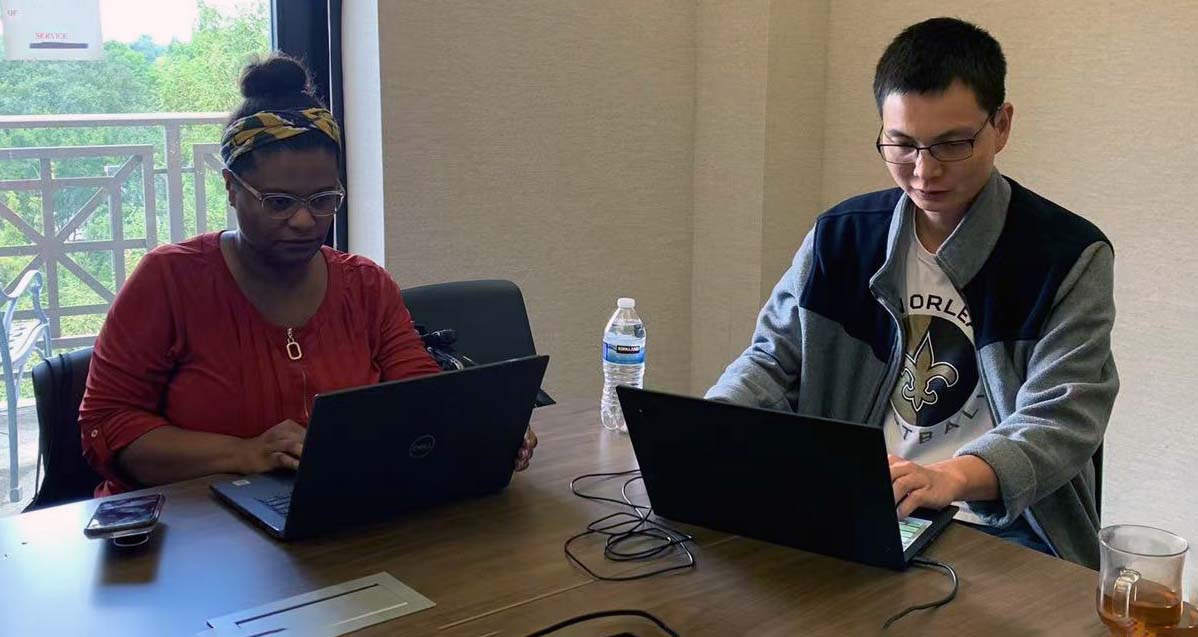CC&E Expands the Pipeline for a Diverse Workforce of Coastal and Environmental Scientists Through Partnerships with Four Local Schools
August 11, 2022

The Eva Legard Center for Coastal and Environmental Studies opened its doors to students for the first time this August.
BATON ROUGE --When the Eva Legard Center for Coastal and Environmental Studies opened its doors to students on August 8th, it was a landmark in more ways than one. Not only is this the Center’s inaugural year, Eva Legard is the first environmentally focused secondary school in the Baton Rouge area. Its creation is just one example of how LSU’s College of the Coast and Environment is teaming up with its LSU colleagues and local educators to prepare students for challenging careers in preserving and protecting our coastal environment for future generations.
The Eva Legard Center is a “Focus Choice School”, established through a partnership between the East Baton Rouge Parish School System (EBRPSS), LSU’s College of Human Sciences and Education (CHSE), College of the Coast & Environment (CC&E), and the LSU Laboratory School. CC&E faculty and students will serve as subject matter experts for the school, explained Chris D’Elia, professor and dean of CC&E. CHSE, under the leadership of Dean Roland Mitchell, and the LSU Laboratory School, under director Kevin George, will provide pedagogical support.

Dean Chris D'Elia speaks at the Eva Legard Center dedication.
Eva Legard is only accepting 6th graders this year but will eventually expand up through the 12th grade. These students won’t just study the coast or the environment as part of a unit of curriculum in a science class. Rather, coastal and environmental issues will serve as the unifying theme throughout every course in the school day. In art class, students may create projects inspired by the coast; when they take English, they may read and write about environmental issues.
In order to help the Eva Legard Center’s faculty prepare for this highly focused curriculum, CC&E hosted a two-week workshop for teachers, funded by the National Science Foundation’s Geosciences Directorate.
At the training, Eva Legard educators from all subject areas received an in-depth briefing in current Louisiana concerns in environmental and coastal science, led by CC&E Professor Linda Hooper-Bui and her graduate students, as well as other CC&E faculty, including the dean himself. They also collaborated on designing experiments and other hands-on activities to use in their classrooms.
The collaboration isn’t ending when the school year starts. With funding from the EBRPSS Board, two LSU graduate students will work in the school as resource people for teachers and students throughout the year.
Dean D’Elia listed the other ways CC&E could potentially contribute. “We can provide coursework in for dual enrollment and advanced placement. We can be a destination of choice for their students… We can be partners with the teachers, parents and students.”
Another CC&E faculty member, Jun-Hong Liang, also spent time this summer working with local educators. As part of his prestigious CAREER award from the National Science Foundation, Liang, an associate professor of Oceanography and Coastal Sciences, paired with the head of the science department at Kenilworth Science and Technology School to develop earth science curriculum and create experiments for teachers at the school to use in their classrooms.

Professor Jun-Hong Liang helped develop middle school science curriculum.
Once again, hands-on activities were a crucial theme as the two worked to develop experiments that would illustrate otherwise abstract, or difficult-to-grasp issues. To demonstrate the problems created by plastic debris in ocean water, for example, students will conduct an experiment requiring them to monitor the time it takes for water to break down paper versus plastic. When they observe how much longer the plastic holds together, Liang said, it can lead to conversations about recycling, and waste reduction.
CC&E Associate Dean Sibel Bargu Ates, an Oceanography and Coastal Sciences professor, is currently working with the Mayfair Lab School’s “ecoSTEM” program—environmentally themed projects each class completes every year. Bargu Ates first began her involvement by assisting the school in identifying surplus lab equipment they might be able to use for some projects, and this blossomed into a larger collaboration. More LSU faculty and students became interested in the program and one day, in a Zoom meeting with faculty and school staff, Paul Miller, a CC&E coastal meteorologist, suggested putting in a weather station. “They were super excited for that idea,” Bargu Ates said and the school went out and bought one. Now, as part of their ecoSTEM projects, Mayfair students can collect weather data. This model could be replicated at other schools.
Bargu Ates personally continues her work today by assisting teachers in the development of middle school activities around water quality and plans on working with the school this year to formalize the relationship and to integrate additional LSU faculty expertise into the program.
LSU expertise of a different kind is helping out at the Math, Science and Arts Academy-East in St. Gabriel. There, the students of CC&E’s Wetland and Water Quality class, taught by Associate Dean John White, are providing guidance to first-generation college students by giving important information on navigating life at a university. The LSU students share stories of their failures and successes, provide advice and answer questions and also share information about potential careers for those entering the STEM field.
Opportunities for collaboration between educators and the university continue to expand. Even before the school year officially started, the partnership between the CC&E and the Eva Legard Center drew the attention of Jason Learning, company that creates STEM curriculum. It has approached CC&E about creating a more extensive environmental curriculum further. “I see this as a real future opportunity not just for CC&E but for all of LSU,” said D’Elia. “I think that there are bigger opportunities for us down the line.